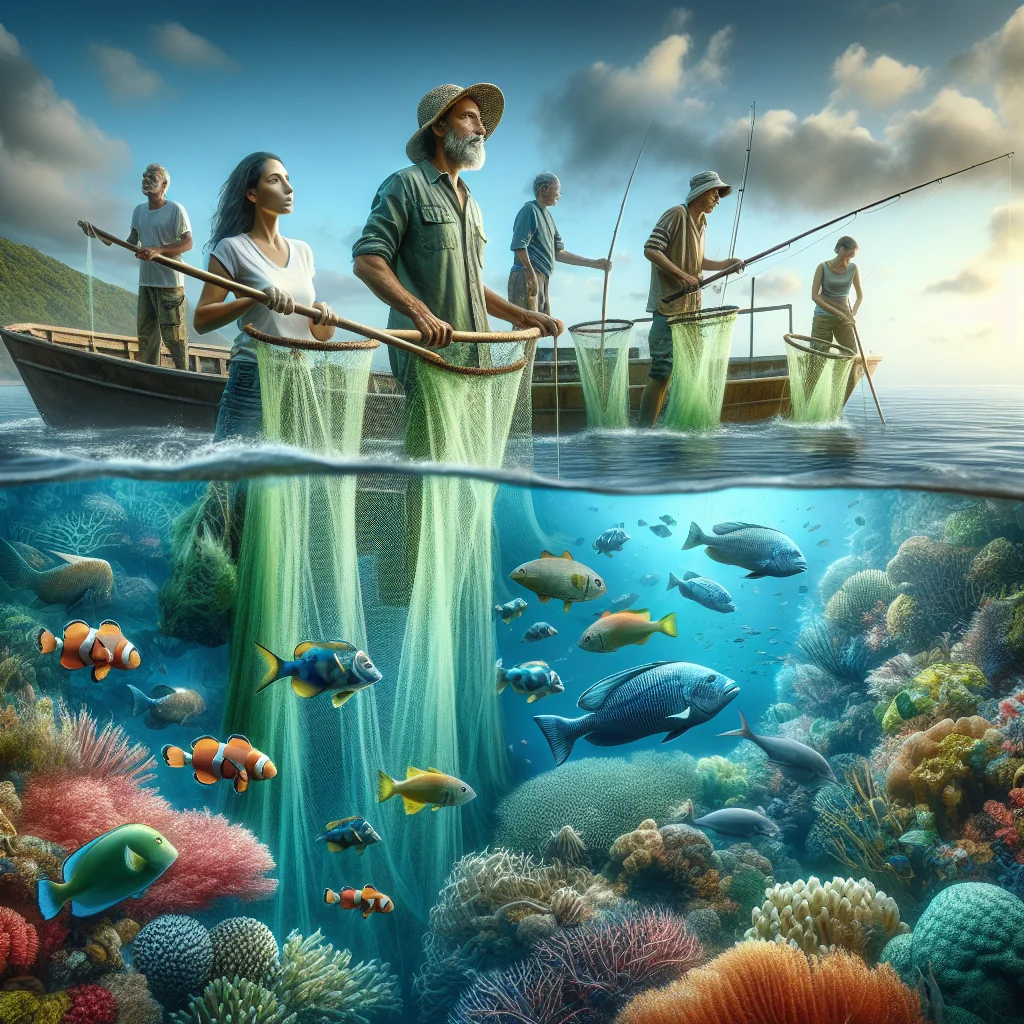Fishing Sustainably: Techniques for Protecting Our Waters
April 18, 2025

Fishing is not just a pastime; it's a powerful way to connect with nature and the ecosystem. However, as fishing enthusiasts, we carry the responsibility of ensuring that our actions do not harm the environments we cherish. In this article, we will explore various sustainable fishing techniques that not only maintain the balance of our aquatic resources but also enhance the overall fishing experience.
Understanding Sustainable Fishing
Sustainable fishing refers to practices that seek to minimize environmental impact while allowing for the continued availability of fish populations. This approach balances the need for recreational and commercial fishing with the urgency of preserving aquatic ecosystems. Sustainable practices include catch and release, selective fishing, and adherence to local regulations designed to protect fish populations.
The Importance of Catch and Release
One of the most effective sustainable fishing techniques is catch and release. This practice involves carefully handling fish so they can be returned to their habitat after being caught. Here are some important tips to ensure a successful catch and release:
- Use Barbless Hooks: Barbless hooks reduce injury to the fish, making it easier to release them back into the water.
- Limit Air Exposure: Try to keep the fish in the water as much as possible. If you need to take a photo, keep the fish close to the water and return it quickly.
- Wet Your Hands: Before handling a fish, wet your hands to prevent removing the slime coating that protects them from infections.
By practicing catch and release, anglers can help ensure that fish populations remain robust for future generations.
Selective Fishing Techniques
Selective fishing involves targeting specific species or sizes of fish to allow certain populations to thrive. This method is particularly effective in managing fish stocks. Here are a couple of approaches:
- Size Limits: Many fisheries have regulations that specify minimum size limits for fish that can be kept. Respecting these limits allows younger fish to grow and reproduce, helping maintain healthy populations.
- Seasonal Closures: Participating in designated seasonal closures helps protect spawning fish. Understand local regulations and consider fishing outside of peak spawning times.
By practicing selective fishing, anglers can contribute to the sustainability of fish populations, ensuring that both present and future anglers can enjoy the sport.
Utilizing Eco-Friendly Gear
The gear you choose can also impact sustainability. Opting for eco-friendly fishing tackle can minimize your environmental footprint. Consider these options:
- Biodegradable Bait: Use baits made from natural ingredients that break down easily without harming the ecosystem.
- Sustainable Rods and Reels: Some manufacturers are creating fishing gear from recycled materials or responsibly sourced resources. Look for certifications that reflect environmental consciousness.
- Avoid Single-Use Plastics: These can pollute waterways. Consider reusable tackle bags and containers to reduce waste.
Investing in eco-friendly gear promotes sustainability and demonstrates a higher level of responsibility as an angler.
Educating Yourself and Others
An essential component of sustainable fishing is education. Staying informed about local ecosystems, fish populations, and conservation efforts can elevate your fishing experience while supporting the health of aquatic habitats. Here are some ways to stay educated:
- Participate in Workshops: Join local conservation groups or workshops focused on sustainable practices. Many local fish and wildlife agencies offer programs to help educate anglers.
- Follow Local Guidelines: Each fishing area has its own set of rules and regulations designed to protect the wildlife in that ecosystem. Stay updated on these guidelines and follow them diligently.
- Spread the Word: Share your knowledge with fellow anglers and encourage sustainable practices within your fishing community. A collective effort can lead to significant positive impacts.
The Role of Technology in Sustainable Fishing
In recent years, technology has played a pivotal role in promoting sustainable fishing practices. Apps and devices that track fish populations, monitor catch data, and provide real-time information about fishing conditions are increasingly accessible. For instance:
- FishTrack Apps: These digital tools can help anglers identify healthy fishing spots while avoiding overfished areas. This approach aligns with sustainable fishing practices by spreading out fishing effort and reducing pressure on popular locales.
- Smart Devices: Innovations such as underwater drones and eco-friendly fish finders enable more efficient fishing without overtly disrupting marine life.
Protecting Our Aquatic Ecosystems
Finally, protecting aquatic ecosystems goes beyond the act of fishing itself. Anglers play a crucial role in the stewardship of our waters. Here are a few practices to adopt:
- Clean Up: Always leave your fishing spot cleaner than you found it. Pick up trash, dispose of fishing lines properly, and encourage others to do the same.
- Advocate for Conservation: Support initiatives aimed at protecting natural habitats. This can include involvement in local cleanups or advocacy with organizations focused on preserving aquatic environments.
- Practice Responsible Tourism: When fishing in new locations, research local ecology and conservation needs. Respect wildlife and contribute to local economies by supporting sustainable practices.
Conclusion
Sustainable fishing is not just a trend; it is a necessity. By adopting eco-friendly practices like catch and release, selective fishing, and responsible gear choices, anglers contribute significantly to the health of our water ecosystems. Every responsible choice enhances our fishing experiences while ensuring future generations can enjoy this beloved sport as well. As fishing enthusiasts, we must work together to make sustainability a priority, cherishing the waters we treasure and the lives they support.
Back